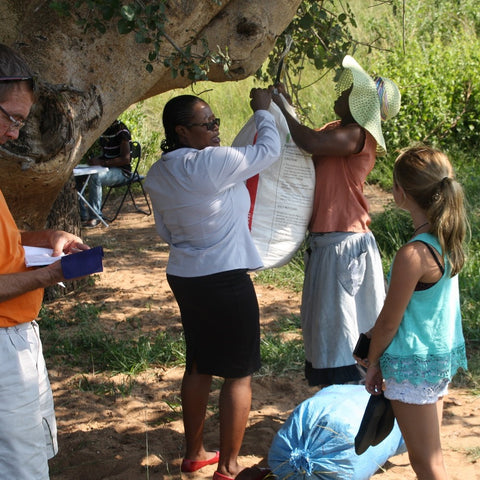It's all about Sisal.

Sisal has the botanic name of Agave sisalana and is a species of Agave native to Mexico that grows wild in Swaziland. It was traditionally used to make rope and twine.
Harvesting the Sisal
Rural women in Swaziland harvest sisal while out gathering firewood for their homes or tending to livestock. They remove the young leaves from the plant which are preferable to Tintsaba as the fibre is a bright cream colour and therefore takes the natural dyes better,
Stripping & Drying
Harvested leaves are stripped using a little water and the leaves are split and the flesh of these succulent leaves scraped away, revealing the strong sisal fibres. These are laid out to dry in the sun on mats to dry which can take several days.
Packing & Purchasing
The women who harvest the sisal go through it carefully to ensure it's clean of all the flesh and then pack it in large sacks. Tintsaba visit the harvesting groups regularly to weigh and purchase.

Benefits
- Organic
- Uses no chemicals to harvest, only a little water
- Swaziland views the plant as an invasive weed and damages the natural ecology of the land
- Abundant supply, which can be found in local communities, so women can earn an income from home